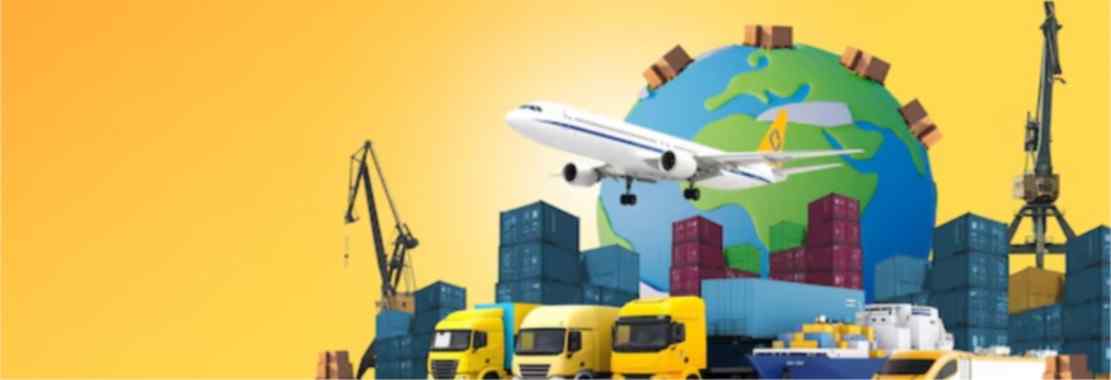At 11 am today, Finance Minister Shrimati Nirmala Sitaraman started presenting her eighth consecutive budget. As expected, Budget 2025 created a lot of buzz everywhere, including in the parliament. From common people to economic sectors, all awaited to see what the FM would take out from her red box this year!
There is no denying that in the upcoming Budget 2025, exports and imports will be a key area for the FM. Calling the Indian economy one of the fastest-growing among all major economies, she outlined the continued efforts of the Modi government to keep the country on the track of ‘Viksit Bharat’. She mentioned that four powerful engines drive Indian economic development:
Agriculture
MSMEs
Investments
Exports.
Let’s take a closer look.
Key Announcements for Export-Import Sector in Union Budget 2025
In her Budget 2025 speech, Finance Minister mentioned that India’s Export-Import Industry was the fourth engine that drives our economy. With the aim of transformative reforms, the following measures have been announced:
Export Promotion Mission
The government announced plans to establish an Export Promotion Mission with specific sectoral and ministerial targets, jointly led by the Ministries of Commerce, MSME, and Finance. This mission aims to simplify access to export credit, offer cross-border factoring support, and assist MSMEs in overcoming non-tariff barriers in international markets.
Easy access to capital
The FM aims to reduce India's trade deficit. To support this goal, the finance ministry plans to simplify credit access for exporters, tackling a significant challenge for businesses aiming to expand internationally.
Setting up of Bharat Trade Net
As part of this Export Promotion Mission initiative, a digital public infrastructure called Bharat Trade Net will be developed to serve as a unified platform for trade documentation and financing solutions. This system will be aligned with international best practices and will work alongside the Unified Logistics Interface Platform to streamline trade processes. Additionally, support will be extended to enhance domestic manufacturing capacities, ensuring deeper integration with global supply chains.
Strengthening the MSMEs
The FM emphasized that MSMEs play a pivotal role in establishing India as a global manufacturing powerhouse. They contribute 45% of the country’s exports. To accelerate their growth and efficiency, the government plans to expand the investment and turnover limits, raising them by 2.5 times and 2 times, respectively.
The FM believes that this strategic move aims to equip MSMEs with greater scalability, foster innovation, and create more job opportunities for the youth.
Rationalisation of customs tariff
The government is set to refine the customs tariff structure to eliminate duty inversion and bolster domestic manufacturing, value addition, and exports. This rationalization aligns with the broader customs rate review introduced in the July 2024 Budget, aiming for a more efficient and business-friendly trade framework.
Nourishing Tier-2 cities
A national framework will also be introduced to guide states in promoting Global Capability Centres (GCCs) in emerging tier-2 cities. This framework will offer recommendations for improving talent availability, infrastructure development, and collaboration mechanisms with industries.
Focus Product Scheme
The Focus Product Scheme for the Footwear and Leather sectors aims to create 22 lakh jobs, drive a turnover of ₹4 lakh crore, and boost exports beyond ₹1.1 lakh crore.
Government Initiatives and Reforms for Export-Import Sector
Opportunities for the youth
The government plans to identify key sectors based on objective criteria and establish facilitation groups comprising senior officials and industry representatives to focus on select products and supply chains.
With the rise of Industry 4.0, which demands highly skilled talent, there are immense opportunities for Indian youth. To leverage these, the government will support the domestic electronic equipment industry, enabling it to benefit from emerging global trends.
Infrastructural reforms
Furthermore, the government will work on upgrading infrastructure and warehousing facilities for air cargo, particularly for high-value perishable horticultural products. Reforms will be introduced to streamline cargo screening and customs protocols, making the system more efficient and user-friendly.
Future Outlook of India’s Export-Import Industry Post Budget 2025
Exports and imports are the backbone of international trade. While imports reflect a country's engagement with foreign markets, exports propel it beyond domestic boundaries, earning global recognition.
Exports fuel economic growth by generating foreign exchange, boosting production, and creating jobs in key industries. Imports drive innovation by introducing new technologies while expanding consumer choices and lowering costs. Together, they shape a thriving economy, balancing global trade, fostering development, and enhancing overall market efficiency and competitiveness.
Over the last few years, the Indian export and import sector has witnessed significant growth and development. A skilled workforce, favourable government policies, competitive prices and growing awareness have opened up a whole new series of opportunities.
As a key highlight of the 2025-26 budget, this initiative is designed to reduce India's trade deficit, which surged to a record $32.8 billion in November 2024. With exports surpassing $600 billion by December 2024, the Commerce Ministry remains confident in achieving its ambitious $800 billion export target for the fiscal year.
Disclaimer: Investments in the securities market are subject to market risk, read all related documents carefully before investing.
This content is for educational purposes only. Securities quoted are exemplary and not recommendatory.
For All Disclaimers Click Here: https://www.bajajbroking.in/disclaimer












